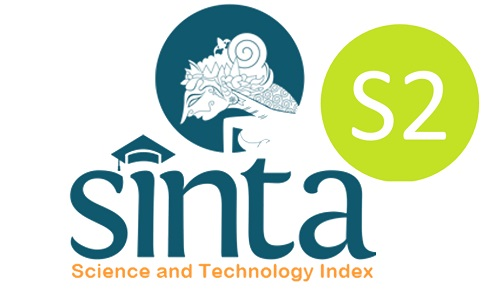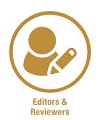CORRELATIVE ASPECTS OF LANGUAGE SPECIFIC OPERATION AND ARITHMETIC PROCESSING IN BILINGUALS’ BRAIN; AN OVERVIEW OF BEHAVIOURAL AND NEUROLOGICAL STUDIES
DOI:
https://doi.org/10.22373/ej.v1i2.185Keywords:
bilingual, language specific operation, arithmetic processing, language development, language dominance,Abstract
This study talks about what aspects correlated between the language specific operation and arithmetic processing skills that occur in bilingual people’s brains. Some studies toward the behaviour and neurology’s aspects are discussed as well as their findings in order to answer the research questions of the study. The discussions reveal that both skills have a positive correlation and that both occur in the brain’s left hemisphere; however, the left hemisphere largely participates in automatic language specific operations and simple calculations, while the right hemisphere dominates advanced control processing operations in calculation (e.g. calculus, logarithm) and language information transfer. In addition, studies show that the bilinguals’ language dominance does not clearly determine the correlation between the language and arithmetic skills. Further, in order to retain better arithmetic concepts, comprehensive and simultaneous training should be conducted in both languages and in the early stage of language development, especially during bilinguals’ critical age of language learning.Downloads
References
Baldo, J. V., & Dronkers, N. F. (2007). Neural correlates of arithmetic and language comprehension: a common substrate. Neuropsycholigia, 45, 229-235.
Basso, A., Caporali, A., & Faglioni, P. (2005). Spontaneous recovery from acalculia. Journal of International Neuropsychological Science, 11, 99-107.
Benn, Y., Zheng, Y., Wilkinson, J. D., Siegal, M., & Varley, R. (2012). Language in calculation: a core mechanism Neuropsycholigia, 50, 1-10.
Cohen, L., Dehaene, S., Chockon, F., Lehericy, S., & Naccache, L. (2000). Language and calculation within the parietal lobe: a combined cognitive, anatomical, and fMRI study. Neuropsycholigia, 38, 1426-1440.
Dahmen, W., Hartje, W., Bussing, A., & Sturm, W. (1982). Disorders of calculation in aphasia patients-spatial and verbal components. Neuropsycholigia, 20. 145-153.
Dehaene, S., Spelke, E., Pinel, P., Stanescu, R., & Tsivkin, S. (1999). Source of mathematical thinking: behavioral and brain imaging evidence. Science, 284, 970-974.
Ischebeck, A., Zamarian, L., Egger, K., Schocke, M., & Delazer, M. (2007). Imaging early practice effects in arithmetic. NeuroImage, 36(3), 993-1003.
Lin, J.-F. L., Imada, T., & Kuhl, P. K. (2012). Mental addition in bilinguals: an fMRI study of Task-Related and Performance-Related activation. Cerebral Cortex, 22, 1851-1861.
Pica, P., Lemer, C., Izard, V., & Dehaene, S. (2004). Exact and approximate arithmetic in an Amazonian indigene group. Science, 306(5695), 499-503.
Salillas, E., & Wicha, N. Y. Y. (2012). Early learning shapes the memory networks for arithmetic evidence from brain potentials in bilinguals. Phychological Science, 23(7), 745-755.
Semenza, C., Dalazer, M., Bertella, L., & Grana, A. (2006). Is math lateralized on the same side as language? Ringht hemisphere aphasia and mathematical abilities. Neuroscience Letters, 406, 285-288.
Tamamaki, K. (1993). Language dominance in bilinguals' arithmetic operations according to their language use. Language Learning, 43(2), 239-262.
Vitali, P., Tettamanti, M., Abutalebi, J., Danna, M., Ansaldo, A. I., Perani, D., Joanette, Y. (2003). Recovery from anomia: effects o specific rehabilitation on brain reorganization: an er-gMRI study in 2 anomic patients. Brain and Language, 87, 126-127.
Warbuton, E., Price, C. J., Swiburn, K., & Wise, R. J. (1999). Mechanism of recovery from aphasia: evidence from Positron Emmision Tomography studies. Journal of Neurology, Neuro-surgery and Phychiatry, 66, 155-161.
Downloads
Published
Issue
Section
License
Proposed Policy for Journals That Offer Open Access
Authors who publish with Englisia journal agree to the following terms:
- Authors retain copyright and grant the journal right of first publication with the work simultaneously licensed under a Creative Commons Attribution License that allows others to share the work with an acknowledgement of the work's authorship and initial publication in this journal.
- Authors are able to enter into separate, additional contractual arrangements for the non-exclusive distribution of the journal's published version of the work (e.g., post it to an institutional repository or publish it in a book), with an acknowledgement of its initial publication in this journal.
- Authors are permitted and encouraged to post their work online (e.g., in institutional repositories or on their website) prior to and during the submission process, as it can lead to productive exchanges, as well as earlier and greater citation of published work (See The Effect of Open Access).









